How Do You Responsibly Close a Diamond Mine?
Much of the conversation about ethics in the diamond industry focuses on the process of operating a mine — but it's just as important to consider what happens when one closes.
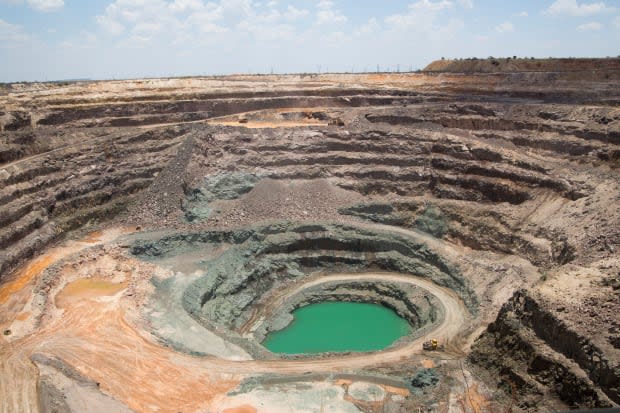
When Kanye West dropped the music video for "Diamonds from Sierra Leone" in 2005, he was inviting viewers to engage with perhaps the most salient fashion ethics issue of the mid-aughts: conflict diamonds. His video, filled with images of blood-spurting diamond jewelry and forlorn-looking child miners, provided a graphic introduction to the moral questions embedded in our supply chains.
But if he was remaking the video today, it's likely that West's focus would be different. Conflict-free gem certifications are now so common that they're often taken for granted, and these days, the diamond debate is more likely to focus on lab-grown versus naturally-mined varieties or the environmental impact of mining.
A crucial but often-overlooked part of the equation in both 2005 and today, though, has to do less with the process of operating a diamond mine than it does with shutting one down. What happens to a mine — and the people and ecosystems it touches — when it ceases operations?
"For me it's almost like the question," says Katie Fergusson, SVP of Social Impact at De Beers Group, one of the largest diamond mining companies in the world, on the phone. "We need to be planning for closure right from the design of the mine."
Related Articles
How a Massive Gender Gap Is Hurting the Diamond Industry
As Lab-Grown Diamonds Near Mainstream Acceptance, the Entire Industry Is Changing
Could Tiffany & Co. Tip the Scales in Favor of a More Transparent Diamond Industry?
This planning is crucial for a couple of reasons, the first being that mines represent an inherently limited resource. Unlike a clothing factory, which could theoretically run indefinitely, a diamond mine has a built-in, if somewhat flexible, expiration date. Once there are no more diamonds to be found in the ground — or just too few to keep the mine economically viable for the company running it — it will be closed. Even if a diamond lasts forever, the mine it came from won't.
The second reason planning ahead is crucial is that closing a diamond mine isn't quite as simple as shuttering something like an apparel factory. Diamond mines mark the landscapes they inhabit as noticeably as something like a mountain or lake would, which means that opening and closing them can have serious ramifications for natural ecosystems.
Dr. Lindsay A. Bell, an anthropologist at Western University, has extensively studied the impacts of mining in northern Canada. From her perspective, part of responsibly closing a mine means accounting for gaps in current environmental knowledge.
"We don't know the consequences of some of these things because it's the first time these operations have worked on this scale," she says on the phone. "One region I worked in was a gold mine region from about the '30s to the '90s. There are high levels of arsenic in the soil now... all those [mining] companies have gone out business, so now it's the government's problem."
Though gold mining and diamond mining don't necessarily have the same environmental impact, Dr. Bell's point is that properly caring for the environment means having a plan in place for years or even decades down the line in case unforeseen issues arise.
"Saying 'we'll just put the trees [that were there before the mine] back,' maybe that's okay, but will the ducks come back, will the wildlife repopulate?" she asks. "In the case of the Arctic where people actually rely on some of the animals for food, that's quite serious."
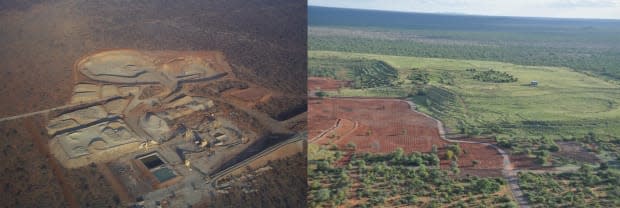
Dr. Ian Power, an environmental geoscientist at Trent University, is currently looking for solutions that might help diamond mines not just minimize their negative impact, but actually turn their waste byproducts into an environmental boon.
"I've been working with [University of British Columbia researcher] Greg Dipple on seeing how that waste product could be used to sequester carbon dioxide," Dr. Power says in a phone interview.
How might that work? To mine any material, you have to dig up a lot of ore that the material is embedded in. The leftover rock is treated as waste, called a mine's "tailings," which the mining company has to figure out how to dispose of. Depending on what you're mining, those tailings might generate acid or other substances that can contaminate watersheds, and therefore have to be contained in sealed storage facilities, a little bit like landfills.
But Dr. Power and his fellow researchers have proven that some kinds of mine tailings also have the potential to capture carbon dioxide, one of the greenhouse gases contributing to global warming. This occurs naturally through the weathering that happens when rainwater reacts with certain mineral surfaces, which means that mining's habit of breaking up rock — resulting in more surface area for those chemical reactions to take place — can encourage more carbon capture than would've naturally occurred. Power and his colleagues are looking at ways to potentially speed up this process even further. If they succeed, the hope is that they could help mines partially or fully offset their carbon emissions through proper tailings management.
Dr. Power is quick to admit that this science is still in the experimental stage. "I don't want to give the impression that we're going towards full-scale implementation next year or something like that," he says. But he hints that his research, which is partially funded by diamond companies, might not be possible if it weren't for the fact that diamond sellers have a financial incentive to prove they're working to shrink their ecological impact.
"The diamond industry is unique [among mining industries] in that they do sell this luxury product, so they see the reputational benefits of trying to be a responsible company, trying to reduce their brand's emissions," he notes. "They recognize that millennials... want ethical diamonds [from] companies that are trying to minimize their impact on the environment."
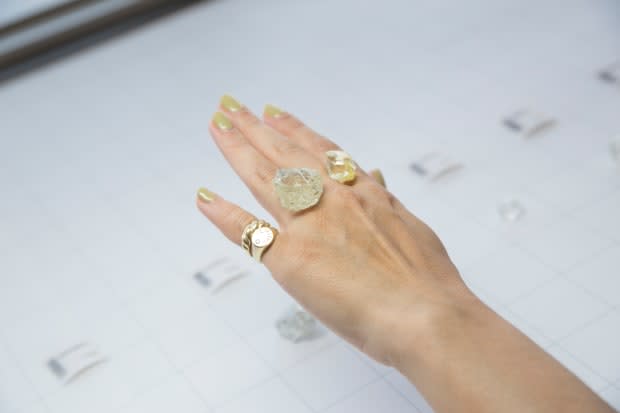
At De Beers, responding to this consumer demand for "ethical diamonds" means monitoring noise pollution and water and air quality throughout the entire time a mine is operating, rather than just starting to monitor those things when it's time to close. At each mine the company operates, Fergusson says, there are teams dedicated to keeping track of these different metrics on a day-to-day basis.
"You shouldn't be getting to the end [of a mine's existence] and suddenly have these really significant environmental liabilities to remediate, which is what would have happened in mining about 50 to 100 years ago," says Fergusson.
As important as it is that mining companies take ownership of their environmental footprint by monitoring it and paying for any remediation efforts needed, Dr. Bell would also add that true responsibility involves bringing in a third-party source to verify that due diligence has been done. Just as the fashion industry has learned that self-regulation rarely works when it comes to keeping factories safe, mines need to be evaluated by independent reviewers to make sure they're really doing all they should be with regards to environmental responsibility.
Ecological concerns are just one side of the coin when it comes to mine closure, though. There's plenty to keep in mind from a social standpoint, too: Mines can be such capital-rich endeavors that whole nations may come to depend on the income they generate and the jobs they create.
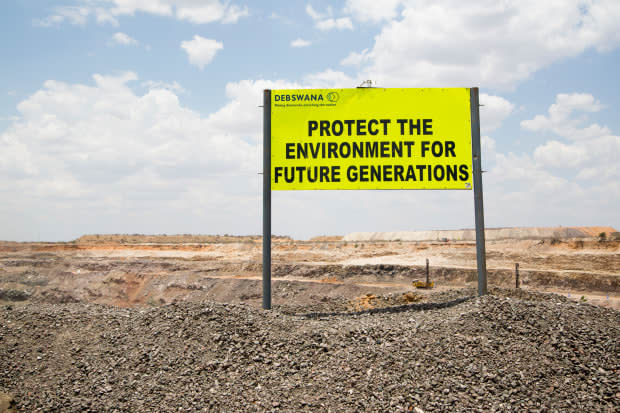
In Botswana, for example, which is one of the world's largest suppliers of rough diamonds, the stones account for nearly a fourth of the nation's GDP, according to the CIA's World Factbook. On the positive side, that means that the diamond industry has helped Botswana to go from being one of the world's poorest countries when it gained independence in 1966 to being one of the most economically stable countries in Africa today.
The shadow side of this, though, is that any slowdown or shutdown of mines has the potential to hurt the country's economy in a significant way. A similar effect can be seen on a micro level. Mini economies often spring up around a mine, which can go from being a hole in "the middle of nowhere" to a bustling hub of activity and commerce in a very short span of time.
For a mine to suddenly close down when a small community or whole nation depends on the income it generates can be devastating.
"When a town has grown up around one industry and therefore is entirely dependent on that industry either through direct employment or through the suppliers and services who indirectly supply it, if that industry suddenly disappears over a very short time span, the effect of that is very long term," says Fergusson. "It's very hard for that community to come back from that."
To combat these forces, similar to the ones that created ghost towns after the Gold Rush petered out in the US, De Beers prioritizes open and honest communication with its employees about how long a mine might be around at least a full year before closure, according to Fergusson. It also connects current employees to job training resources, provides interview training and creates financial planning programs to try and prepare employees to transition out of mine work into whatever's next for them.
At Victor, a De Beers-operated mine in Canada that shut down this year, the company hosted a job fair that Fergusson described as "hugely successful" in placing a "majority" of former mine employees in new non-mining positions. (What percentage, exactly, she didn't know.) De Beers' aggregation, cutting and polishing facility, which processes diamonds from all over the world, was relocated from London to Botswana to create more jobs that aren't directly dependent on Botswana's own mining output.
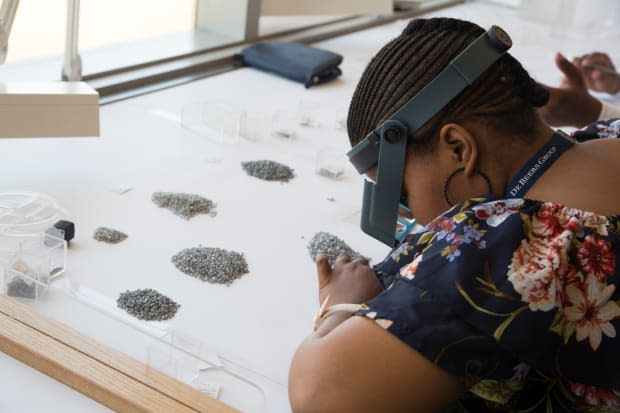
Still, Dr. Bell would caution any onlooker to ask how risk is being distributed when looking at the potential social costs involved in mining, especially after the mine has closed and the company behind it has packed up and left.
"Within a country like Canada, it's continuously Indigenous people who are being exposed to the highest risk," she says. "Sure, they might be getting more jobs or interesting opportunities, but if all of our policies continuously put them at the highest risk, then we have a problem. If I'm not willing to put my own son's future in mining, why would I think that's okay for some other Canadians just because they’re Indigenous Canadians?"
Listening to the groups of people whose lives will be most affected by the opening, operation and closure of mines is crucial in figuring out how to manage any of it responsibly, says Dr. Bell. That means engaging local stakeholders deeply and over long periods of time, rather than having one open mic night where locals are invited to share their concerns. It means understanding that many people who live in the vicinity of a mine, even if they're not directly employed by it, are affected by the presence and eventual closure of a mine — and therefore they should have some share in any benefit that a mine brings to an area, whether that's a better road or a better school.
And it also means taking people seriously when they say that the economic benefit of having a mine in or near their town, even if only for a few decades, is worth the risks associated with it.
Dr. Bell says Botswana's model, in which all De Beers mines are co-owned by the national government, is probably one of the best ways to make sure that the process of closing a mine is held accountable to social, and not just corporate, interests. As long as there's no way for a corporation to pull out and eventually leave the government to deal with any leftover problems alone, she says, that kind of 50-50 partnership makes a lot of sense.
"I think it's somewhat naive to just be against mining, and it wouldn't make me popular with the people in the communities that I work with," she says. Rather than advocating the end of mining entirely, she says, "We need to extend [corporate] responsibility way past closure so that you can really see the true effects of those big projects."
Disclosure: Forevermark, a De Beers-owned company, provided my travel and accommodations to visit the Orapa mine in Botswana.
